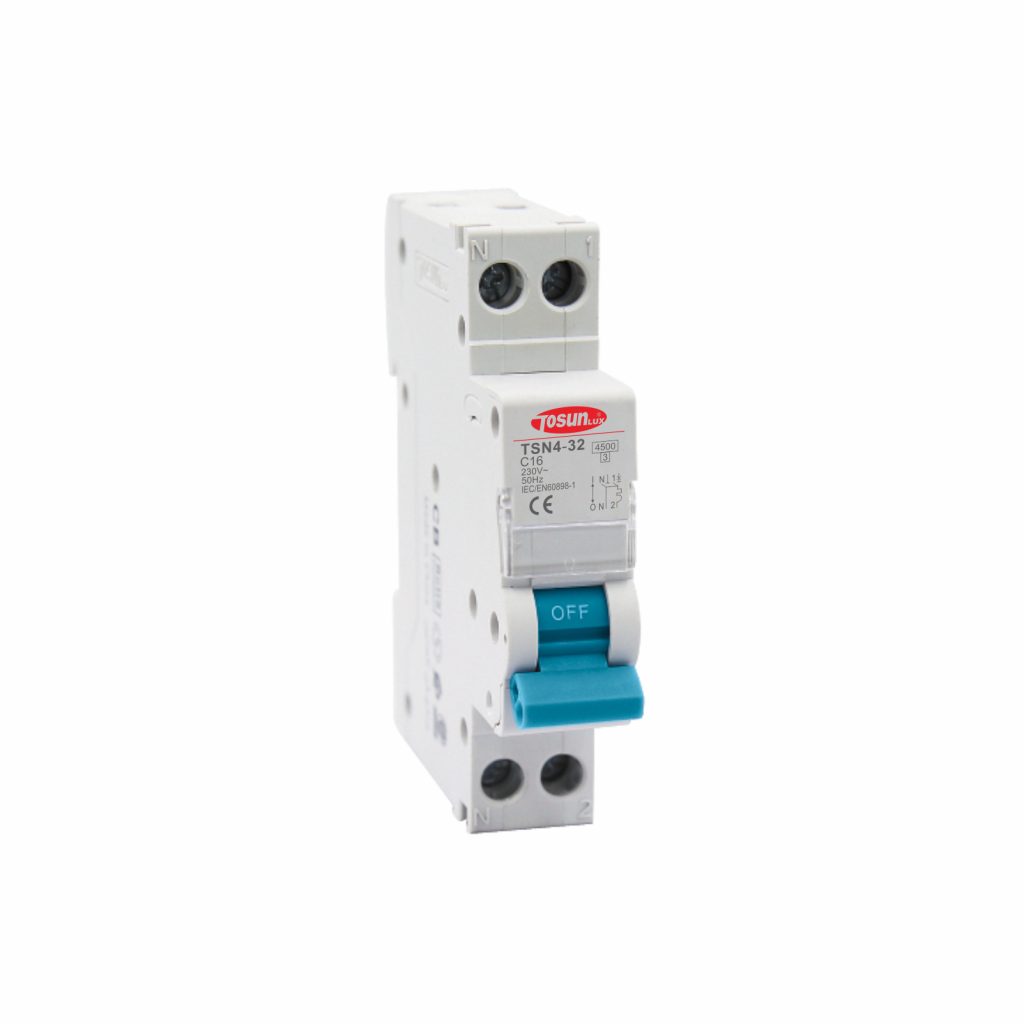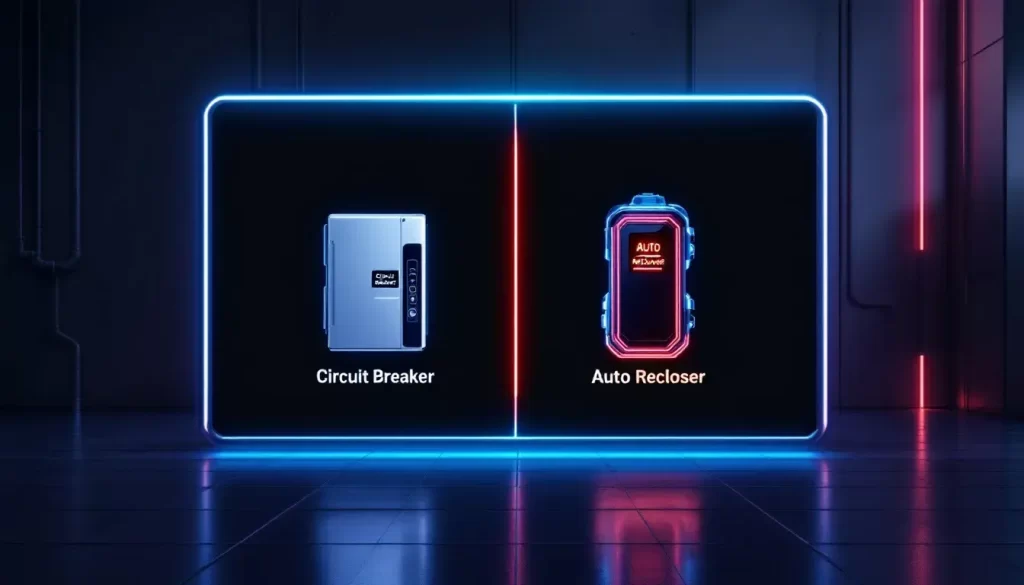The Difference between Recloser and Circuit Breaker
Table of Contents
ToggleAn automated circuit breaker cuts off and restores electrical power automatically during faults, enhancing both safety and efficiency. These devices are essential in preventing extended downtimes and manual reset needs. In this article, we’ll explore their functions, benefits, and their distinction from auto reclosers.
Key Takeaways
- Circuit breakers are essential devices that protect electrical circuits from overcurrent and short circuits, providing manual or automatic reset capabilities for enhanced convenience and safety.
- Auto reclosers offer advanced functionality by automatically resetting and restoring power after temporary faults, significantly reducing downtime in electrical systems.
- The key difference between the two lies in their applications; circuit breakers typically require manual resetting and are used in various settings, whereas auto reclosers are suited for critical scenarios that demand continuous service and can operate in multiple voltage configurations.
What is an Circuit Breaker?

A circuit breaker is a crucial device in any electrical system, designed to protect electrical circuits from damage caused by overcurrent or short circuits. When an electrical fault occurs, the circuit breaker interrupts the flow of electricity, preventing potential hazards like fires or equipment damage. Unlike fuses that need replacing after a single use, circuit breakers can be reset, either manually or automatically, making them more convenient and durable for overcurrent protection.
Key Features of Circuit Breakers:
- Protection: Circuit breakers safeguard electrical systems by stopping electricity flow during faults.
- Resettable: Unlike fuses, circuit breakers can be reset, saving time and resources.
- Versatile Applications: Used in homes, businesses, and industrial settings, circuit breakers are essential for safety.
- Efficiency: They quickly restore power after interruptions, minimizing downtime.
Interesting Facts:
- Circuit breakers can handle various voltage levels, making them suitable for both residential and industrial use.
- They can last for decades if maintained properly, providing long-term protection for electrical systems.
In summary, circuit breakers are vital for maintaining electrical safety and efficiency by automatically detecting and isolating faults, ensuring smooth operation across various settings.
What is an Auto Recloser?
An auto recloser is a smart device used in electrical systems to automatically restore power after temporary faults, such as those caused by lightning strikes or short circuits. Unlike traditional circuit breakers that need to be reset manually, auto reclosers can reset themselves. This feature helps in quickly restoring power, reducing downtime, and maintaining continuous service.
Key Features of Auto Reclosers:
- Automatic Reset: Auto reclosers automatically reset after a fault, minimizing manual intervention.
- Multiple Attempts: They can attempt to restore power multiple times, ensuring temporary faults don’t lead to long outages.
- Versatility: Suitable for different voltage levels, including single-phase and three-phase configurations.
- Efficiency: By quickly restoring power, they save time and resources for power companies.
Interesting Data:
- Auto reclosers can reduce downtime by up to 80% in areas with frequent temporary faults.
- They are commonly used in medium voltage distribution systems, enhancing reliability.
In summary, auto reclosers are essential in maintaining electrical reliability and efficiency by automatically handling temporary faults, ensuring that power supply remains stable and uninterrupted.
Difference Between Circuit Breaker and Auto Recloser

| Feature | Circuit Breaker | Auto Recloser |
|---|---|---|
| Primary Function | Interrupts the flow of current during electrical faults. | Automatically resets and restores power after temporary faults. |
| Resetting Mechanism | Requires manual or automatic resetting after tripping. | Automatically resets multiple times before isolating the fault. |
| Typical Applications | Used in residential, commercial, and industrial settings where manual intervention is feasible. | Commonly used in power distribution networks and remote areas where continuous service is vital. |
| Voltage Configurations | Suitable for various voltage settings. | Operates in both single-phase and three-phase configurations. |
| Efficiency | May lead to longer downtimes due to manual resetting. | Minimizes downtime by quickly restoring power after temporary faults. |
| Common Scenarios | Ideal for settings where the cost of downtime is not excessively high. | Beneficial in areas prone to transient faults like lightning strikes. |
| Flexibility and Adaptability | Offers reliable protection against electrical faults. | Provides greater flexibility in managing complex electrical systems. |
| Role in Electrical Systems | Protects electrical equipment and users by stopping electricity flow during faults. | Ensures continuous service and reduces disruptions in critical applications. |
Summary
Understanding circuit breakers and auto reclosers is key for efficient electrical systems. Circuit breakers interrupt electricity during faults and need resetting, while auto reclosers automatically restore power after temporary faults, ensuring continuous service. Both devices are crucial for reliable power distribution.
Enhance your electrical system today by choosing from our top-quality circuit breakers and auto reclosers!
Tel: +86-577-88671000
E-mail: ceo@tosun.com
Skype: tosunelectric
Wechat: +86-139 6881 9286
WhatsApp: +86-139 0587 7291
Address: Room No.1001 Wenzhou Fortune Center,Station Road, Wenzhou, China
REQUEST A QUOTE
WhatsApp us
 : +86-139 0587 7291
: +86-139 0587 7291 English
English Español
Español Русский
Русский Français
Français العربية
العربية Português do Brasil
Português do Brasil Українська
Українська Türkçe
Türkçe Polski
Polski Nederlands
Nederlands Italiano
Italiano Bahasa Indonesia
Bahasa Indonesia हिन्दी
हिन्दी اردو
اردو አማርኛ
አማርኛ Հայերեն
Հայերեն ไทย
ไทย Монгол
Монгол فارسی
فارسی Shqip
Shqip Ελληνικά
Ελληνικά


